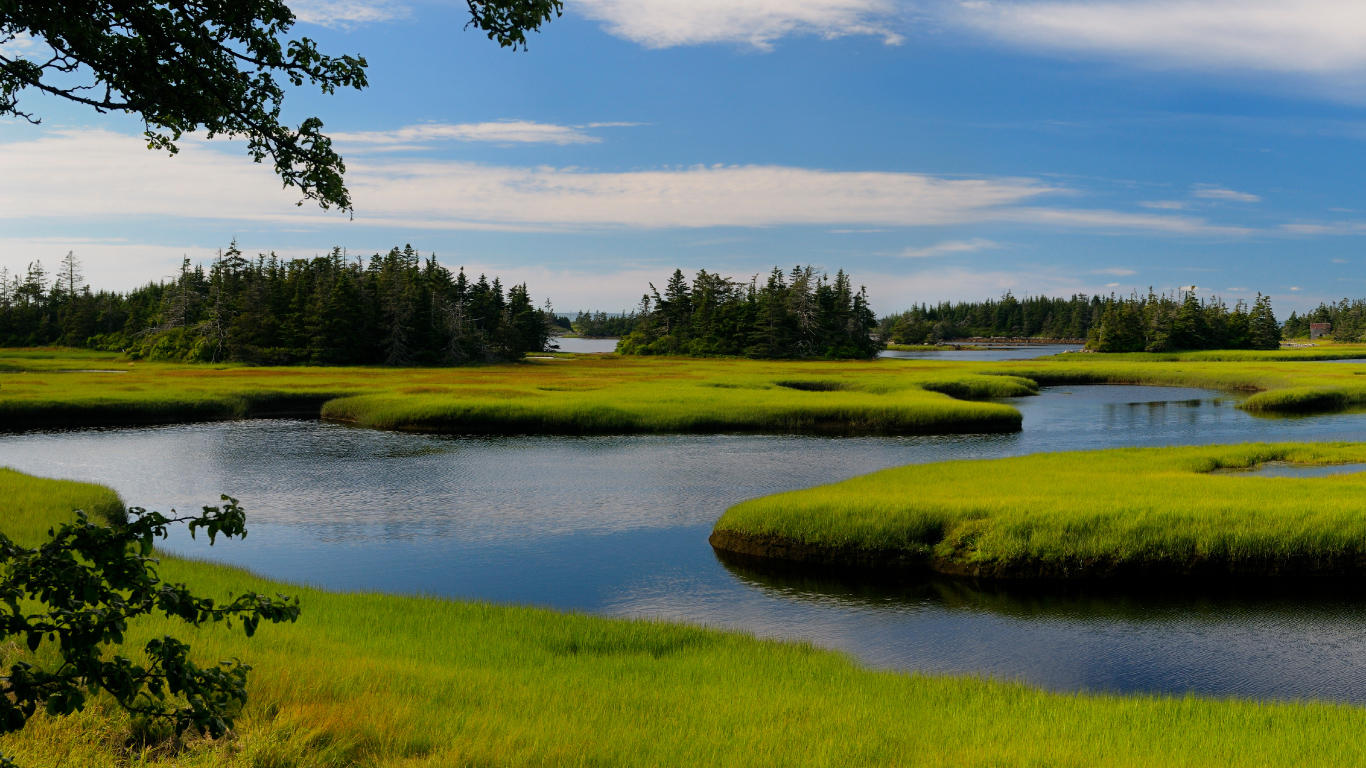
Salt marshes are a type of tidal wetland along Canada’s coastline.
They are typically found in the upper intertidal zone between mean sea level and high tide, where salt- and flood-tolerant vegetation, such as graminoids, can grow. The vegetation in salt marshes plays a critical role in stabilizing marsh soils and facilitating establishment and growth of marsh.
In 2022, salt marshes were mapped across an estimated 9% of Canada’s coastline.
Harvesting in Canada’s salt marshes
Salt marshes provide valuable ecosystem services including but not limited to carbon sequestration, protection against coastal storms and flooding, maintenance of water quality and quantity, habitat provision and support of recreational activities.
Several food species are harvested from salt marshes across Canada. For example, Glasswort, known by many common names including pickle weed, sea asparagus, samphire greens and “titanes de souris,” is harvested from salt marshes around the world.
Springbank clover (Trifolium wormskioldii) and Pacific silverweed (Potentilla egedii) were traditionally harvested as root vegetables from salt marsh by First Nations, including the Nuu-chah-nulth and Kwakwaka’wakw. These First Nations were known to manage salt marshes to increase production of these plants.
Salt marsh plants are also harvested for purposes other than food, including for medicinal, cultural and decorative purposes. Sweetgrass (Anthoxanthum spp.), an extremely important plant in many Indigenous cultures across Canada, grows in salt marshes across the country. The Mi’kmaq harvest sweetgrass from salt marshes on the East Coast for medicinal purposes, along with sea lavender (Limonium carolinianum) and cattails (Typha spp.).
Salt marshes are an important link between land and marine environments and provide nursery habitat for many commercially important fish species. In 2021, there were 15,986 saltwater fishing businesses in Canada. Of the 4,648 businesses that reported staff numbers, 81 of them employed between 10 and 19 people.
Biodiversity & climate change
In addition to providing habitats and supporting biodiversity, salt marshes help regulate global climate by removing carbon from the atmosphere and storing it.
In 2022, salt marshes in Canada stretched across a total of 3,602 square kilometers. These marshes could be sequestering as much as 785 kilotonnes of carbon per year.
Although Canada has the longest coastline in the world, data on coastal ecosystems are generally lacking, as the focus is typically placed on ecosystems traditionally recognized as economically valuable. However, there is growing recognition of the importance of coastal ecosystems such as salt marshes for climate change adaptation and mitigation.
Salt marshes provide a variety of ecosystem services, including climate regulation, flood protection for coastal communities and important habitat for wildlife, but these coastal ecosystems are vulnerable to climate change and rising sea levels.
Approximately 39% of mapped salt marsh areas in Canada are conserved.
Census of Environment
Statistics Canada will be assessing the health of salt marshes using metrics such as pollution, vegetation density and tidal flooding.
More work is underway to develop ecosystem accounts for Canada’s ecosystems, as part of the Census of Environment. These accounts will provide measures of the extent, condition and services of ecosystems.
Salt marsh has been selected as one of the first focal ecosystems of the Census of Environment to highlight key data gaps and to spur discussion on how to fill them to better understand this ecosystem.
For more information, consult the Census of Environment.
StatsCAN app
Download the StatsCAN app today to have these articles at your fingertips! Already using the app? Leave a review in the Apple App Store and Google Play and let us know what you think.
Contact information
For more information, contact the Statistical Information Service (toll-free 1-800-263-1136; 514-283-8300; infostats@statcan.gc.ca) or Media Relations (statcan.mediahotline-ligneinfomedias.statcan@statcan.gc.ca).
